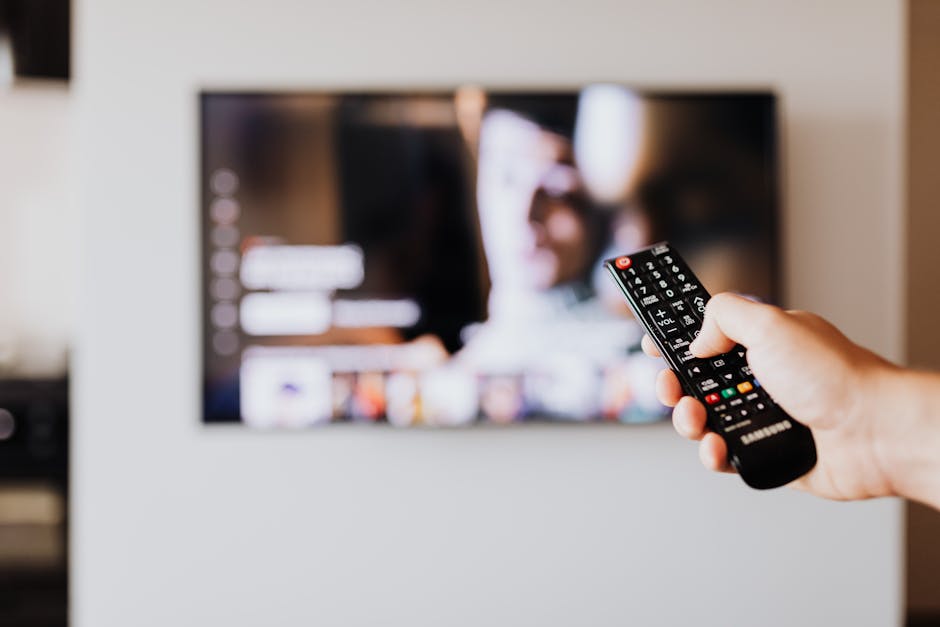Introduction: Why Podcasts Are Everywhere Now
Five years ago, podcasting was still seen as a side hustle for niche creators and hobbyists. Fast forward to today, and it’s a multi-billion dollar industry with millions of shows, global audiences, and major media players investing serious cash. Listening numbers have doubled. Ad spend has surged. The format isn’t just surviving—it’s thriving.
Why? Three reasons: convenience, intimacy, and authenticity. Podcasts don’t demand your full attention. You can tune in while commuting, cooking, or running errands. That frictionless accessibility makes them a perfect fit for a world that’s always moving. Then there’s the connection. A person’s voice in your ears for 30 minutes a day builds trust—and fast. It feels real.
Add in low production barriers and high audience stickiness, and you’ve got a formula that works. People are tired of flashy, overproduced content. They want honesty. Focus. A space that feels more human than algorithm. Podcasts slide right into that lane—and they’re not slowing down.
The Shift in Content Consumption
We’re in a moment where everyone’s distracted—and podcasts are thriving because of it. The average attention span is shrinking, and people aren’t always sitting down to watch a video or read a 2,000-word blog post. But they will pop in earbuds while driving, cleaning, or zoning out at the gym. That’s where passive listening wins.
Compared to blogs, podcasts require less effort from the audience. No screen, no scrolling. Versus video, there’s less pressure to be visually captivating. Podcasting strips it down to voice and story—which creates a different kind of intimacy. Listeners aren’t just consuming; they’re connecting.
This shift is also pushing creators to experiment with structure. Some go long-form and deep-dive with interviews or investigative series. Others keep it tight—bite-sized micro-episodes that hit hard and fast. Narrative, solo, co-hosted, serialized—it’s wide open. That flexibility means creators can craft formats that fit both their message and their audience’s habits.
In a content world built for skimming and skipping, podcasting plays a different game. It asks less from listeners—and ends up giving more.
Who’s Listening and Why It Matters
Podcast audiences aren’t just growing—they’re sharpening. The listener base is now broad but focused, split across key age brackets like 25–44 and skewing toward educated, tech-savvy professionals. These are the people tuning in during commutes, workouts, or coffee breaks—not just for entertainment, but insight. That’s a big deal for creators and brands alike.
Certain industries have found real staying power: health and wellness, business, tech, true crime, personal finance, and self-development lead the pack. But that’s just the start. Hyper-targeted shows—think mental health for veterans, or sustainable investing for Gen Z—are carving out serious engagement. They may not have millions of downloads, but they have audiences that trust every word.
That’s the real game: trust. Podcasting isn’t just content; it’s a voice in someone’s ear, on their time. No visuals, no fluff—just tone, rhythm, vulnerability. This intimacy creates a connection traditional ads or blogs struggle to replicate. It’s why smaller shows can drive niche buying decisions or shift opinions more effectively than giant platforms. Listeners don’t just consume—they subscribe, return, and act. That influence is quiet but heavy—and it’s only growing.
Monetization: From Passion Project to Revenue Stream
Podcasting might begin as a labor of love, but the money is real—and increasingly accessible. The most straightforward route is sponsorship, where cost-per-mille (CPM) deals pay based on listens. Bigger audiences mean higher rates. But you don’t need millions of downloads to earn. Smaller shows often find success with affiliate partnerships or branded content tailored to a niche fan base. These allow for tighter alignment between host, brand, and listener.
Paid subscriptions are also gaining ground. Platforms like Patreon and Apple Podcasts give creators a way to offer bonus episodes or ad-free content for a fee. It’s not a gold rush, but it’s a steady drip that adds up—especially when listeners buy into the creator as much as the content.
Then there’s community funding. Apps like Buy Me a Coffee or Ko-fi enable direct support. It’s simple, low-friction crowdfunding. And for many podcasters, a small group of passionate backers can fund gear upgrades, pay hosting bills, and even cover part-time production help.
Look at shows like “The Daily Stoic,” built slowly with practical wisdom and a loyal base. Or “My Favorite Murder,” which turned grassroots podcasting into a full-fledged live tour empire. These aren’t one-offs. They’re examples of smart, intentional scaling—proof that podcasting can move from side hustle to serious return.
Whether it’s $50 a month or five digits a week, the path to income starts with knowing your audience—and giving them something they’re proud to support.
The Tech Behind the Mic
When it comes to podcast gear, it’s easy to get lost in the weeds. Truth is, a solid entry-level setup—think USB mic, decent headphones, recording software like Audacity—is more than enough to get going. Sound matters, sure. But storytelling, structure, and clarity matter more. The gap between amateur and pro gear is narrowing fast. What matters most is knowing your gear and using it well.
Now, hosting and distribution. For most podcasters, platforms like Libsyn, Anchor (now Spotify for Podcasters), and Buzzsprout pull their weight. They make syndication painless—pushing your show to Apple Podcasts, Spotify, Amazon, and more with minimal hassle. Choose a host that gives you clean analytics, handles uploads smoothly, and doesn’t lock you into their ecosystem.
Discoverability? That’s where SEO slides in. Titles, episode descriptions, and show notes aren’t afterthoughts—they’re your front door. Do keyword research. Write like you’re solving a problem. And don’t overlook episode transcripts: they boost search performance and make your content more inclusive.
Finally, let the analytics guide you—but don’t let them lead. Track completion rates, drop-off points, and what’s actually pulling listeners in. Use the data to experiment smartly: test episode lengths, adjust publishing times, iterate based on listener behavior. But never chase numbers at the expense of voice. The best podcast tech pulls insight from the noise without stealing the spotlight.
Podcasting and Emerging Technology
Podcasts aren’t just staying in your pocket—they’re moving onto your countertop, your wrist, your car dashboard. Integration with virtual assistants like Alexa, Google Assistant, and Siri has turned passive content into interactive media. Voice commands are bringing up the latest episode, skipping segments, or even answering basic listener questions. Podcasters who optimize for these platforms—short intros, clear episode labeling, smart categorization—are getting discovered more often.
Then there’s the podcast-to-video pivot. It’s no longer an experiment—creators are filming studio recordings, adding visual layers, and repurposing audio into clips designed for YouTube, Instagram, even TikTok. The point’s simple: more formats, more reach. Some fans still want headphones and a walking companion. Others want to watch you on a screen. Meeting them where they are is the new baseline.
Beyond that? It gets wild. Augmented reality is poking into podcasting with overlay visuals and spatial audio experiments. AI is already being used to generate highlight reels, transcribe episodes in seconds, and personalize listening flows. Soon enough, people might ask their smart speaker to “give me a 5-minute recap of my favorite pod”—and get something that feels handmade. The future’s less about the mic and more about the experience.
See also: How Augmented Reality is Revolutionizing Media Engagement
Challenges Podcasters Face
Podcasting might be easier to start than ever, but staying relevant—that’s the hard part. With over five million podcasts competing for attention, discoverability is a real grind. Being good isn’t always enough; you’ve got to be found. That means nailing SEO, optimizing episode titles, and showing up where your audience already hangs out.
Then there’s the long haul. Consistency is the silent killer. Regular uploads build trust, but they also drain creative energy. Burnout creeps in fast when you’re the host, editor, marketer, and scheduler all in one. The key? Build a workflow you can actually stick to. Whether that’s batching episodes or working in seasons, smart pacing wins over heroics.
Legal snags don’t make it easier. Music rights, sample clearances, and platform policies are a minefield for the unprepared. You can’t just drop your favorite song into a podcast and call it done. Licensing issues have taken down entire shows. Use royalty-free libraries, or pay up for proper rights—there’s no shortcut here.
Staying in the game means working smarter, not louder. Visibility, endurance, and legal safety aren’t sexy topics—but for podcasters who want longevity, they’re non-negotiable.
Looking Ahead: The Next Chapter in Podcasting
Podcasting isn’t slowing down—it’s evolving. Fast. Three things are picking up speed in 2024: personalization, spatial audio, and live podcasting. Personalized playlists and AI-driven recommendations are making episodes feel tailor-made. Tools are reading your habits and moods, not just your subscriptions. That’s giving listeners more relevant content, and creators more targeted reach.
Spatial audio is no longer an audiophile gimmick. It’s creeping into mainstream setups, helping podcasters build richer, more immersive experiences. For storytellers and narrative shows, this tech adds emotional weight without inflating production time.
Live podcasting is also gaining traction. It’s raw, unfiltered, and taps into the same urgency that made livestreaming boom years ago. Think call-ins, Q&As, or one-take reactions. It’s not replacing recorded content, but it’s carving a new lane—and with audience interaction that’s tough to fake.
Then there’s the blending. Podcasts are fusing with video, slideshows, newsletters, even social threads. Formats are melting together. A podcast isn’t just something you listen to anymore—it’s part of a stack. The voice is still the anchor, but it’s surrounded by layers that pull in wider audiences.
Bottom line: we’re still in early days. Podcasting may have hit maturity in terms of numbers, but creatively, it’s just getting started.
Final Thought
Podcasting isn’t a novelty anymore. It’s not a side hobby for a few talkative creatives—it’s a core channel for how we share ideas, build trust, and stay informed. In a landscape crowded with visuals and short-form noise, the simplicity of audio cuts through. It travels with us—on commutes, in gyms, during walks—and makes learning or storytelling feel personal, even intimate.
And in this format, the voice matters. Not just how it sounds, but what it represents. Listeners grow attached to the cadence, the tone, the vulnerability. A trustworthy voice can drive action, change minds, even build movements. In 2024, creators aren’t just behind microphones—they’re quietly shaping culture. This isn’t a passing content trend. It’s a powerful evolution in how we relate to each other and the world.
If you’re thinking of stepping in, do it with intention. Your voice—raw, steady, or still refining—might be exactly what someone out there needs to hear.




